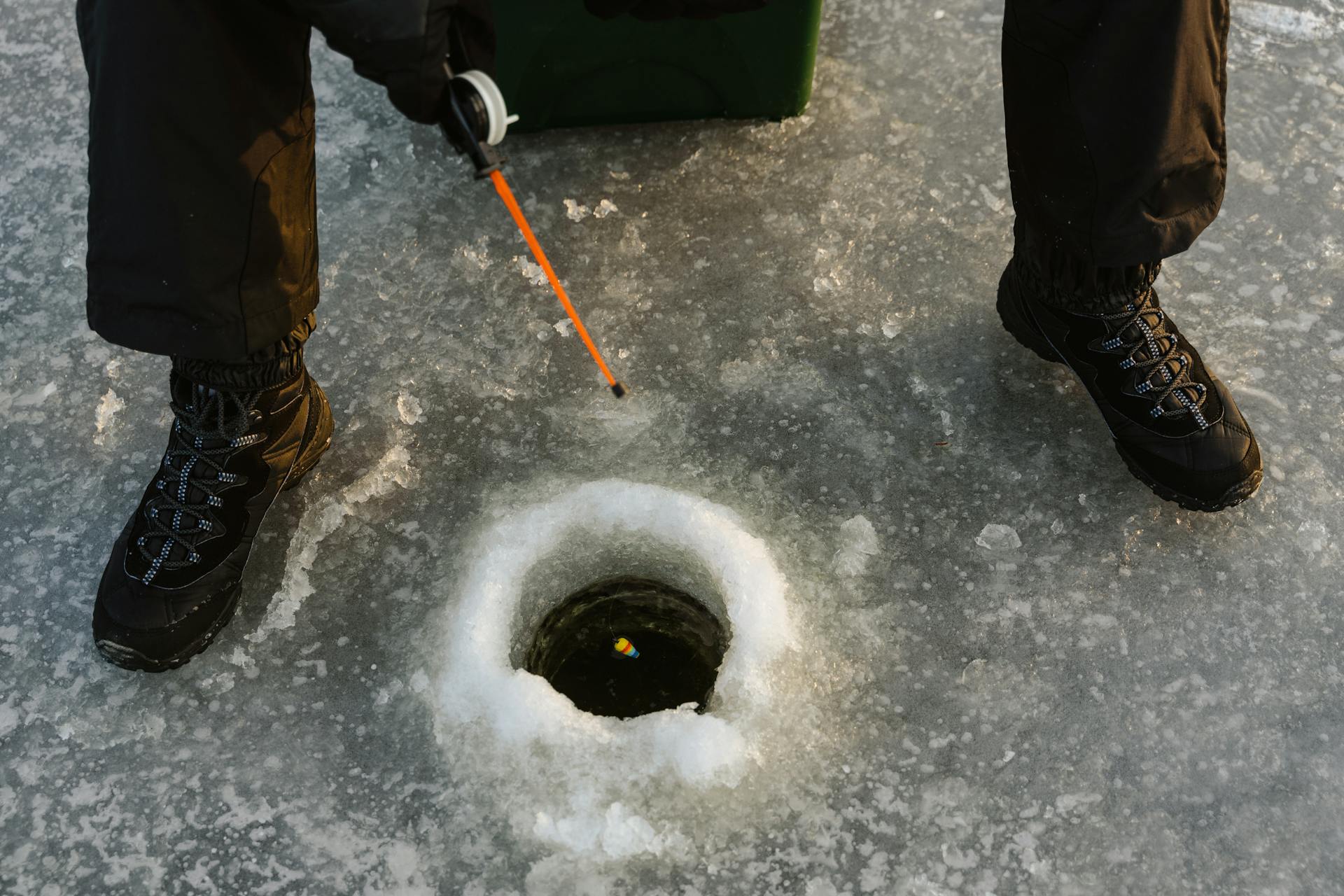
It’s no surprise that Northern residents and visitors flock to their frozen lakes to go ice fishing. A beginner-friendly sport, ice fishing makes for a fun family outing. Plus, it’s true that fish caught from frozen lakes taste better due to the lack of algae.
In previous Lake Homes Lifestyle articles, we detailed top ice fishing tips for beginners and discussed the best lakes in the United States for ice fishing. So now you know the basics and where to go to try out your new skills. But what items do you need to get started? Well, unlike standard fishing, ice fishing requires more than a rod, reel, and bait. You won’t have much luck casting your line into frozen water without the appropriate tools to cut through the ice. But no need to worry—our ice fishing guide will give you everything you need to get started.
Ice Auger
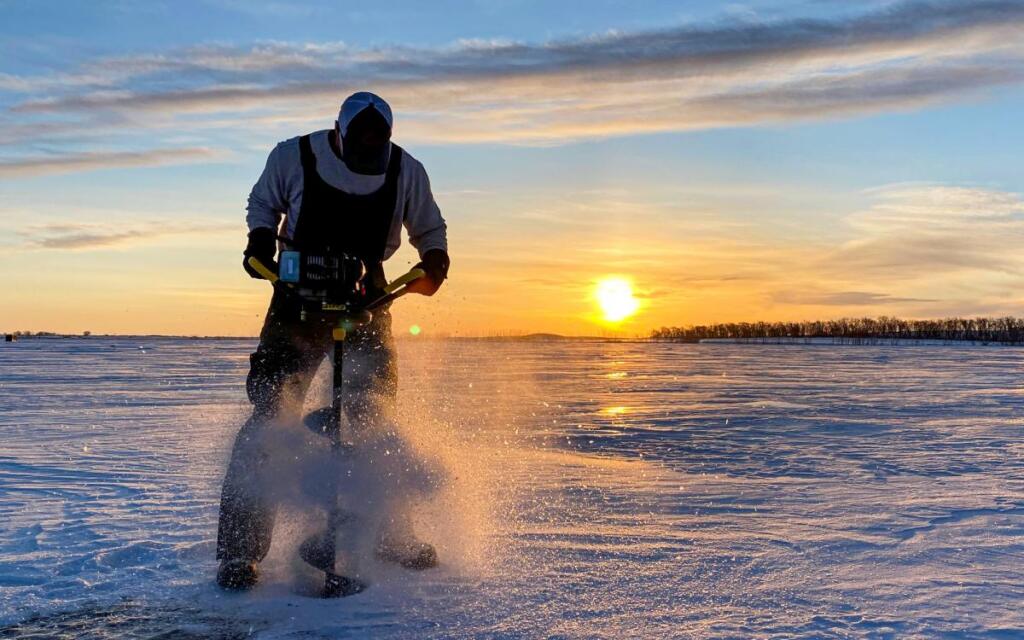
If you want to get into ice fishing, buying an auger is the first step. Since the ice thickness can range from a couple to a dozen inches, you want to make sure you can access the water and fish underneath. You’ll also have to decide which auger to buy. A motorized auger is on the pricier side, but it will save you a lot of time and energy compared to a hand auger—especially if you want to drill multiple holes. The size auger you buy also depends on the fish species you want to catch. For example, panfish usually require a 4.5-6 inch auger, whereas walleye would need a 6-8 inch hole.
Rod and Reel or Tip-Ups
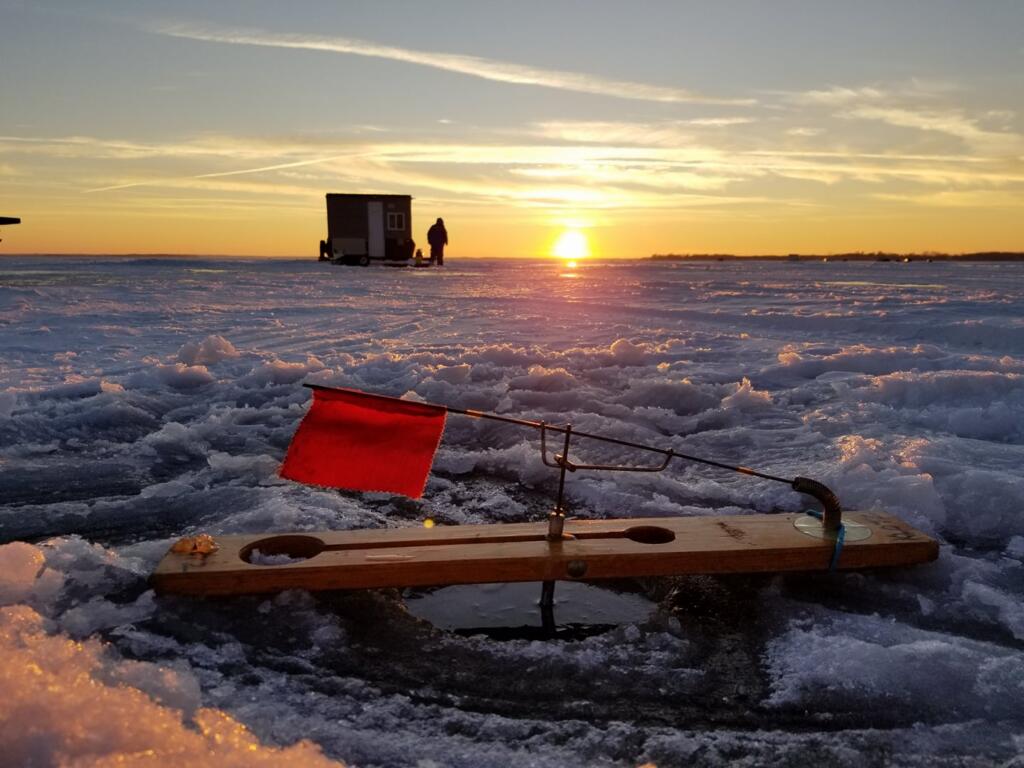
After you drill your hole, you have two primary options for reeling in fresh walleye, perch, panfish, pike, and other popular ice fishing species. On the one hand, you could go for the more traditional choice and use a rod and reel. If so, keep in mind that you won’t need the same length you would for warmer fishing endeavors, as you will simply drop the line down into the hole rather than casting it. Most anglers report that their ideal choice is a 28″ medium power rod with a size 20 spinning reel. They pair this with a six-pound fluorocarbon ice line.
However, on the other hand, if you want to give yourself the advantage of being in two places at once, you should go with a tip-up. This device allows you to set bait for multiple species at the same time. Plus, you can step away from the fishing hole for a moment and not worry about missing out on the action. The flag will notify you when your bait has attracted your prize catch!
Jigs and Spikes
Now onto what seals the deal and gets the fish on your plate—the bait. The perfect ice fishing bait combination starts with a few Tungsten jigs and a couple dozen Spikes (also referred to as Maggots). You can use a Clinch Knot with your Fluorocarbon line to secure the bait. Around 2-3 Spikes hooked through the middle or the tail will set you up for success. Also—even though the process may seem gross—gently pinching the Spikes to expose some of their insides will strengthen their smell and get you more bites. For more jig types and an ice fishing guide, check out this kit.
Bucket and Shelter
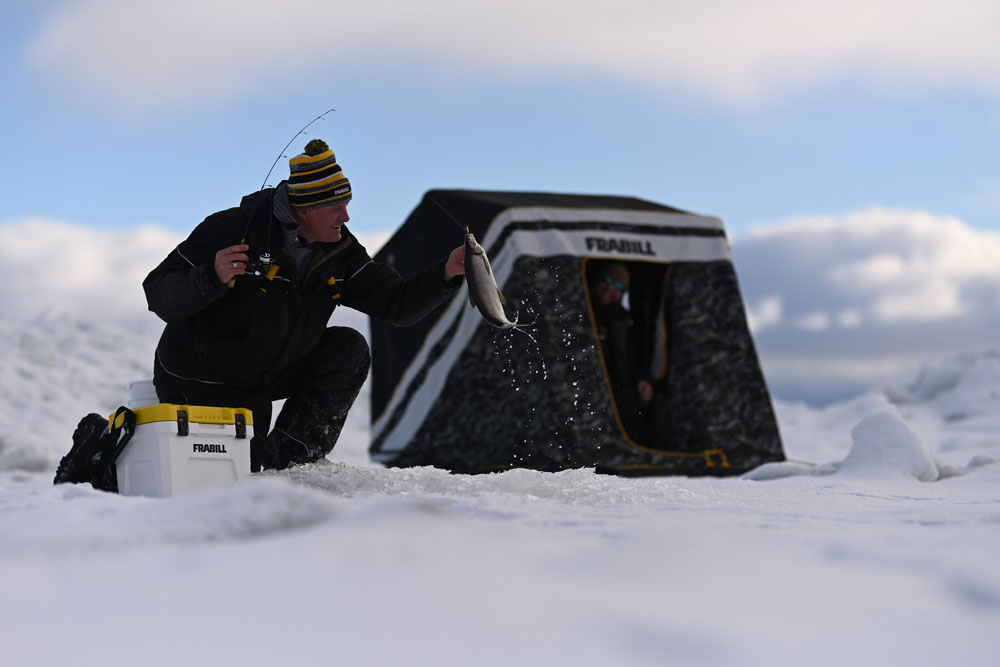
Now you’ve drilled your hole and set up your bait, and you’re waiting to get a bite from that trophy fish. Sometimes, the bite comes immediately, and other times, you have to wait a while. Either way, you want to be comfortable in the meantime. That’s why a bucket and some form of shelter—usually a tent—are integral to creating an ideal ice fishing environment. Without them, it would be hard to stay out on the ice for hours. Plus, since many ice fishing trips often turn into a sort of tailgating experience, you want to make sure you’ll have somewhere to relax.
Sled and Tarp Straps
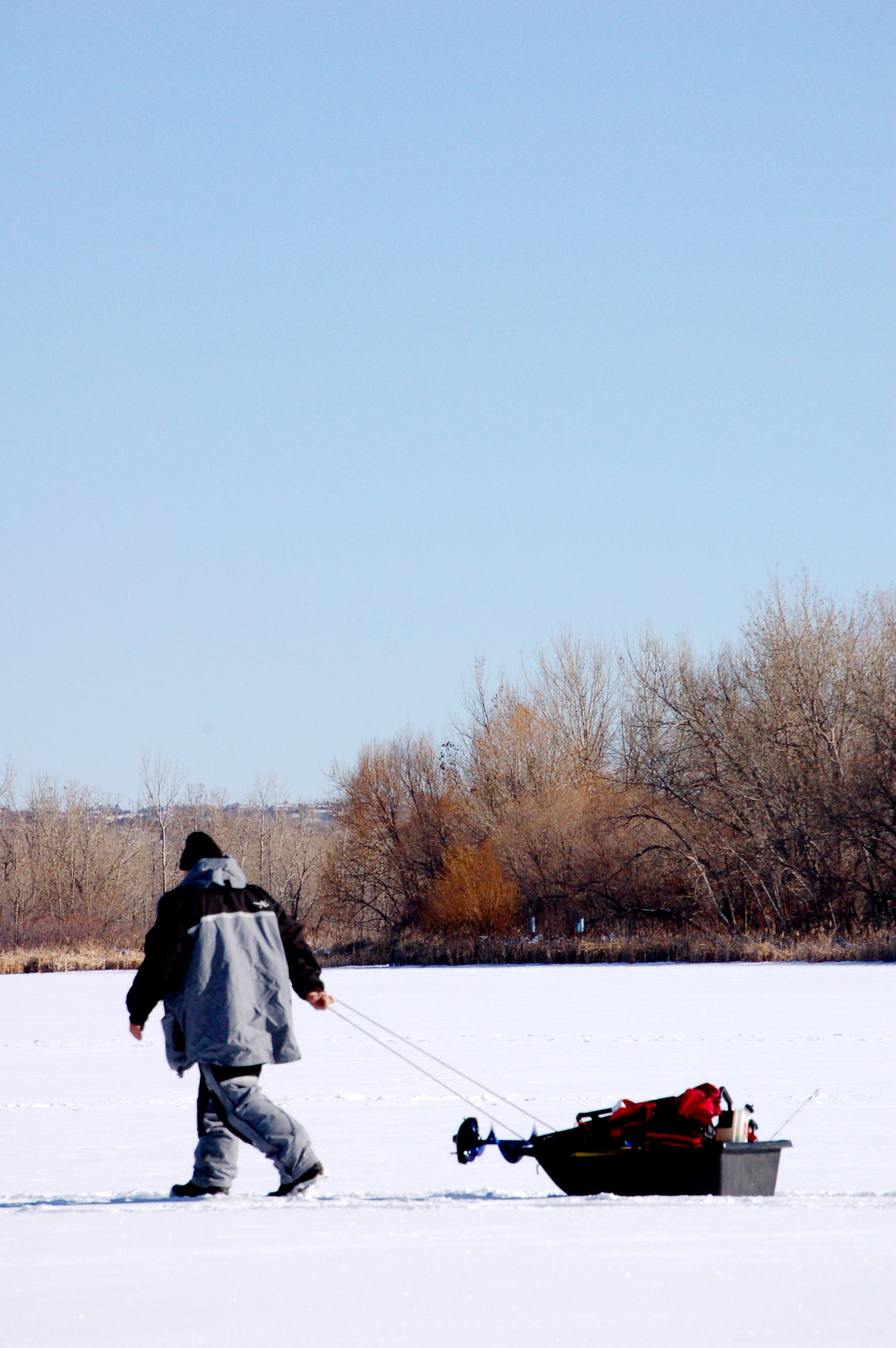
If you already have a large recreational sled, you can easily use it for your ice fishing ventures. However, if you have yet to purchase a sled, you will have the most success with a 4-5 ft. long sled ranging 2-3 ft. wide and one ft. deep. This size sled will easily navigate the ice and also provide plenty of room for your equipment. Additionally, you will want to purchase tarp straps to secure your items. We recommend rubber straps, so your fishing hooks won’t get stuck in them.
Metal Cleats and Safety Picks
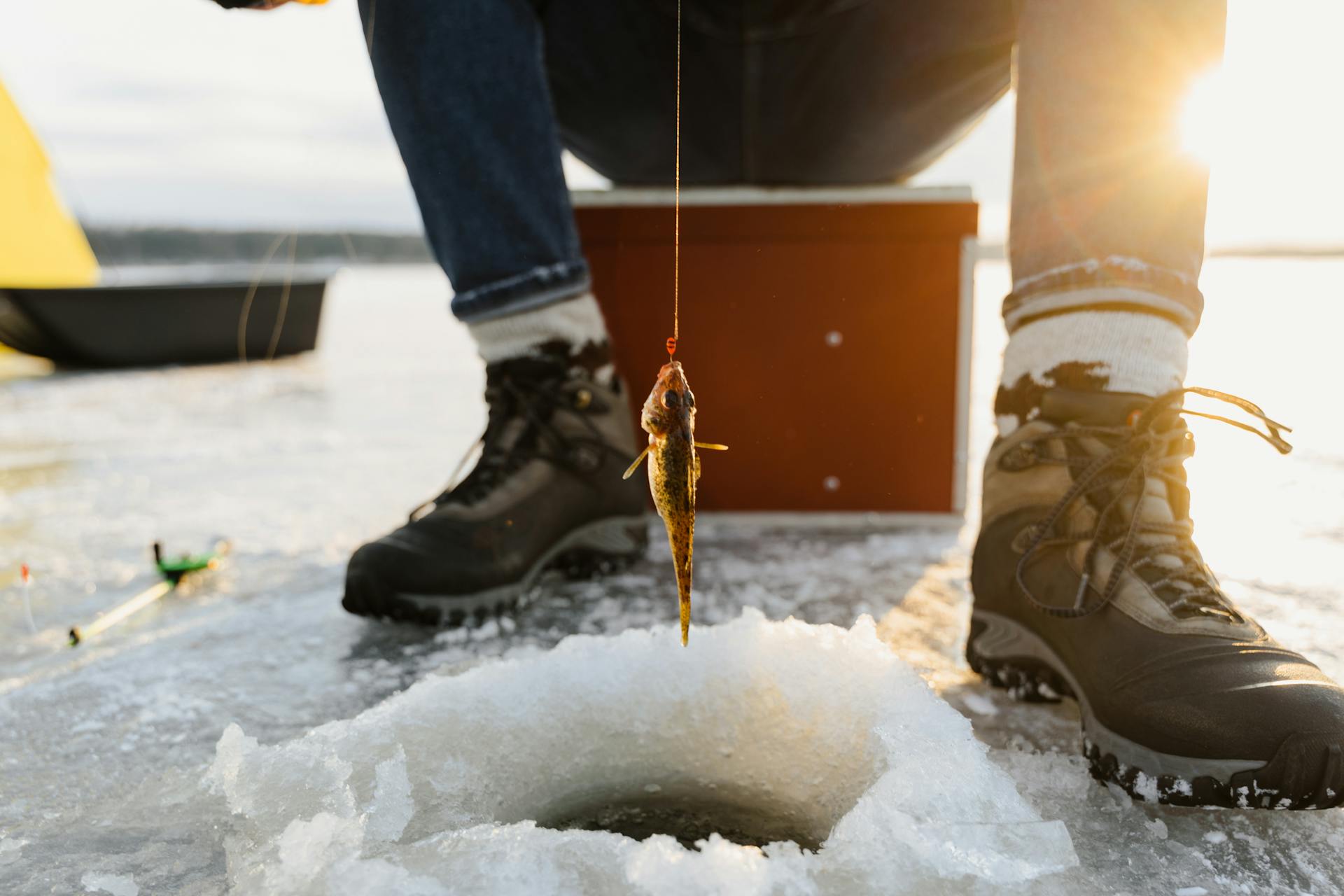
The last components of the ice fishing guide, metal cleats and safety picks will keep you safe while on the ice. Metal cleats prevent you from slipping and increase your overall mobility. However, if you do fall, safety picks will keep you secure. Wrapped around the shoulders, these corded picks enhance your ability to climb out on the water and get back on the ice.
Now you have everything you need for your winter ice fishing adventures. So now, get the whole family together and get ready to have some freezing good times!

